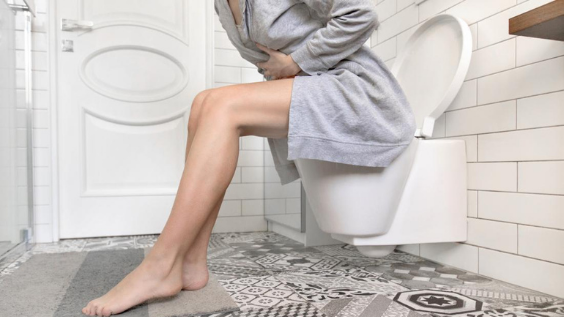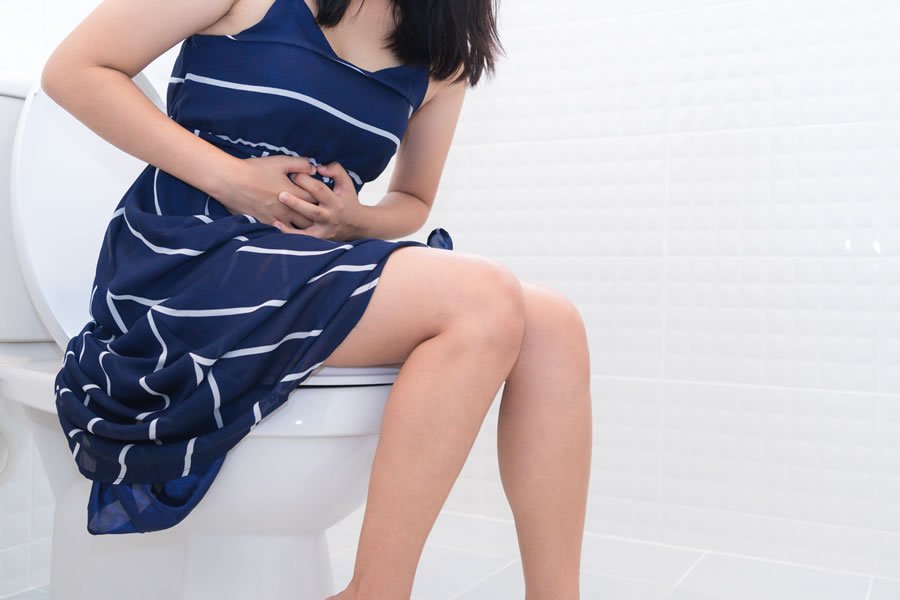
Painful urination syndrome includes a variety of disorders characterised by pain associated with urination. the key feature in painful urination syndrome is pain, and it is the presence of the pain that differentiates this group of disorders from other urinary disorders. Blood in the urine with no pain is classified as haematuria, while blood in the urine with pain is classified as Blood painful urination syndrome.
Painful urination is a very common clinical presentation, and may include a variety of symptoms associated with the passage of urine, including suprapubic discomfort and pain, frequency, tenesmus and urination difficulty. Painful urination syndrome is most common in women.
Aetiology
Heat and Damp Heat in Bladder
External Heat
Damp Heat causing painful urination syndrome is most commonly due to an external Damp Heat pathogen that invades through the tai yang (Urinary Bladder) channel, the leg yin channels or local luo channels. The local luo channels are small branches of the major channels that spread through the genitourinary system. They can be conduits for infection during sexual intercourse or after bowel movements. In practice, transmission of Damp Heat through the luo channels is probably the most common mode of entry, especially in sexually active individuals.
Internal Heat
Internally generated Heat or Damp Heat can also cause painful urination. Heat affecting the Heart or Liver can be transmitted through their associated channels to the lower jiao. Damp Heat generated in the middle jiao by over consumption of rich, greasy or spicy foods and alcohol can simply sink and settle in the lower jiao. Damp Heat can also be generated in the lower jiao by any prolonged Heat in the system, such as the Heat arising from yin deficiency, qi stagnation, or by prolonged stagnation of Dampness. Internal Heat can also be caused by stress and emotional turmoil, which disrupt the circulation of Heart and Liver qi, giving rise to Heart or Liver Fire. When Heat is generated internally, the symptoms tend to be more systemic, reflecting the original source of the Heat. Heat of external origin, however, tends to produce a more localised pattern, with the focus of symptoms in the bladder and urethra.
Once the Heat/Dampness cycle is established it can give rise to other types of painful urination syndrome types of painful urination syndrome. For example, long term Damp Heat in the lower jiao may congeal into urinary stones. The Heat can injure the Blood vessels of the urinary system causing bleeding. The murky nature of Damp Heat can give rise to opaque or turbid urine – cloudy painful urinary syndrome. The Heat types all tend to be more common in women than in men.

Liver Qi Stagnation, Blood Stagnation
Frustration, anger, resentment, sexual tension, repressed emotions and stress can disrupt the circulation of Liver qi, and because the Liver channel passes through the lower jiao, the movement of lower jiao qi is obstructed. When lower jiao qi is obstructed, pain and distension may occur and movement of fluids may be impaired resulting in urinary difficulty.
Liver qi stagnation may be complicated by other pathologies. The emotions that give rise to stagnant qi (particularly anger and resentment) ‘smoulder’ in the Liver and create stagnant Heat, which can be transmitted through the Liver channel to the lower jiao, or to the Heart and then to the Small Intestine. Obstructed qi may fail to lead the Blood, resulting in qi and blood stagnation. Stagnant qi can invade the Spleen, causing deficiency and either contributing to exhaustion painful urination or leading to the development of Dampness, which sinks into the lower jiao, potentially generating Heat and establishing the Damp Heat cycle.
Pre-existing stagnation (of qi and/or Blood) can be transferred from another pelvic organ to the Bladder. This is occasionally observed in women following hysterectomy, myomectomy or removal of ovarian cysts. The organ first affected by the stagnation is removed or repaired, but the qi and/or Blood stagnation that gave rise to the initial problem persists. The focus of pelvic symptoms then shifts from the initial site of the stagnation to the Bladder.
Kidney Deficiency
Kidney deficiency can be either yang or yin deficiency. It may be inherited, or it may develop as a result of age, chronic illness or excessive sexual activity. It can also develop in women who have many pregnancies close together, regardless of whether these result in live birth, miscarriage or termination.
Kidney yang or qi is particularly affected by prolonged exposure to cold conditions or excessive lifting or standing (particularly if this occurs in a cold environment or on cold floors or at night). In some cases, particularly in younger people, Kidney qi may be weakened while Kidney yang remains intact, in which case the cold symptoms are not seen.
Kidney yin is damaged through overwork (especially while under stress), insufficient sleep, febrile diseases, insufficient hydration and the use of some prescription and recreational drugs. The Kidney and Bladder are closely related, so weakness of the Kidney can affect the Bladder. When Kidney qi is weak, the Bladder is vulnerable to pathogenic invasion (through the tai yang, leg yin channels or local luo channels), especially by Damp Heat.
Spleen Deficiency
Spleen deficiency patterns may result from frequent use of antibiotics of bitter cold herbs (both of which easily weaken the Spleen) in the treatment of recurrent Damp Heat or Heat types of painful urination. This pattern may also follow lower abdominal surgery or be associated with prolapse of the bladder or uterus. In these latter cases the sensation is generally one of pressure and discomfort in the suprapubic region rather than urethral pain with urination.

Treatment
After a diagnosis from a qualified practitioner has been given, acupuncture is the treatment of choice and herbal medicines are recommended to support correcting any systemic imbalances that may be present.
Traditional Chinese medicine Classification of Painful Urination
- Heat painful urination is clinically the most common variety, and is characterised by being by being acute and by rather intense burning pain upon urination. It is thought that in all acute cases of painful urination syndrome there is some degree of Heat. It is further divided into two types, Damp Heat and Fire. Damp Heat may occur alone or be found as a contributing feature in stone, Blood and cloudy painful urination syndrome.
- Stone (or sand) painful urination is characterised by the presence of urinary calculi or gravel, and, depending on the location of the stones, intense radiating pain and/or obstructed urination.
- Qi painful urination is traditionally divided into two types, deficiency (of qi) and excess (qi stagnation). The deficiency type is associated with Spleen qi deficiency and often follows recurrent Heat types that have not been treated or treated with antibiotics or excessively cold natured herbs. It is characterised by a dragging discomfort which is relieved by pressure, or a feeling of burning that improves with warmth and pressure. It is traditionally placed in this category, although it overlaps with the Exhaustion types. The excess type is characterised by painful urination aggravated or initiated by stress and emotional upset.
- Blood painful urination is painful urination with blood
- Cloudy painful urination is painful urination with cloudy or milky urine.
- Exhaustion painful urination is chronic and recurrent, and is initiated or aggravated by sex, overexertion and when fatigued. It is characterised by incomplete or dribbling urination, lumbar pain and weakness, and mild pain, which is often worse following urination.
Some Biomedical Causes of Painful Urination
- urinary infection, cystitis, urethritis
- severe infections like gonorrhea, pyelonephritis and herpes
- urethral syndrome
- vaginitis
- neoplasms of the bladder, prostate and urethra
- reiter’s disease
- urinary calculi
- menopausal syndrome
- prostatis
- foreign body in lower urinary tract
- acidic urine
- interstitial cystitis
- vaginal prolapse
- urethral stricture
- chyluria
- albuminuria
